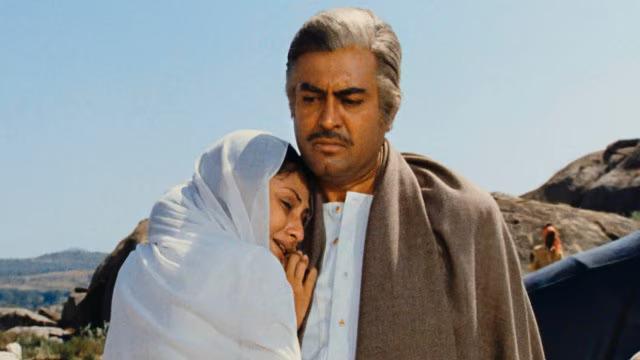
Title: Salim-Javed Changed ‘Sholay’ Climax Because of Emergency: Farhan
The Indian film industry has been blessed with numerous iconic movies, and one of the most beloved ones is Ramesh Sippy’s ‘Sholay’. The 1975 film, written by Salim-Javed, has become a cult classic, and its memorable characters, dialogues, and scenes are still widely popular. However, did you know that the film’s climax was changed due to the Emergency imposed by the Indian government in 1975? According to Farhan Akhtar, the actor and filmmaker, Salim-Javed had to alter the original ending of the film because of the political situation at that time.
In an interview, Farhan Akhtar spoke about the reason behind the change in the climax. He stated, “In the original ending, [Thakur] kills Gabbar…[But Salim-Javed] had to change it due to the Emergency.” He added, “The ending and police showing up didn’t make sense to them, but they had to change it. They had no choice.”
For those who may not be familiar with the film’s climax, let’s take a brief look at what happened. In the original ending, Thakur, played by Amitabh Bachchan, confronts Gabbar, the main antagonist, and kills him in a fierce battle. However, this ending was changed, and instead, the police arrive to arrest Gabbar, effectively ending the conflict. The change in the climax has been a topic of discussion among film enthusiasts and fans for decades, with many wondering why the original ending was altered.
According to Farhan Akhtar, the change in the climax was a result of the Emergency imposed by the government in 1975. The Emergency was a 21-month period of national emergency declared by Prime Minister Indira Gandhi, during which all civil liberties were suspended, and the government gained sweeping powers. The government was accused of suppressing political opponents and civil rights activists, and the Emergency was seen as a dark period in Indian history.
During this time, the government was extremely cautious about any content that could be deemed subversive or anti-government. Films were no exception, and the government began to exercise strict control over the industry. The Censor Board became even more vigilant, and films that showed violence, rebellion, or dissent were severely censored or even banned.
In the context of ‘Sholay’, the original climax, where Thakur kills Gabbar, could have been seen as a symbol of rebellion against the government. In a time when the government was suppressing dissent and opposition, showing a character killing the main antagonist could have been perceived as a subversive message. Therefore, Salim-Javed had to change the climax to avoid any controversy or backlash from the government.
Salim-Javed, one of the most iconic screenwriting duos in Indian cinema, was known for their bold and daring storytelling. They were responsible for some of the most iconic films in Indian cinema, including ‘Zanjeer’, ‘Seeta Aur Geeta’, and ‘Sholay’. Their writing style was characterized by their use of strong dialogue, memorable characters, and gripping plots. In ‘Sholay’, Salim-Javed created a film that was both a tribute to the iconic westerns of the time and a commentary on the social and political issues of India in the 1970s.
Despite the change in the climax, ‘Sholay’ remains one of the most beloved films in Indian cinema. The film’s characters, including Veeru, Jai, Basanti, and Thakur, have become iconic figures in Indian popular culture. The film’s dialogues, particularly the famous “Kitne Aadmi The?” (“How many men are there?”) and “Tandav, Tandav, Tandav” (“Dance, Dance, Dance”), have become an integral part of Indian cinematic lexicon.
In conclusion, the change in the climax of ‘Sholay’ was a result of the Emergency imposed by the government in 1975. According to Farhan Akhtar, Salim-Javed had to alter the original ending to avoid any controversy or backlash from the government. The change may have been a compromise, but it did not detract from the film’s impact or its enduring popularity. ‘Sholay’ remains one of the most iconic films in Indian cinema, and its characters and dialogues continue to inspire new generations of filmmakers and audiences alike.






